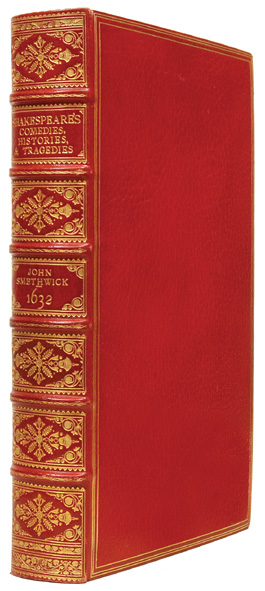Adam Douglas, Senior Specialist in Early Literature at Peter Harrington presents the John Smethwick imprint of William Shakespeare’s Second folio, 1632, one of the scarcest of the variant imprints.
John Smethwick (d. 1641) had been a minor partner in the First Folio, though he owned the rights to two of the best plays – Hamlet and Romeo and Juliet – as well as Love’s Labour’s Lost and The Taming of the Shrew. The Second Folio was published by a conger or syndicate headed by Robert Allot, with variant imprints, one for each of the five booksellers. It appears that each took a specific consignment of the press run to sell at his shop, the size of the consignment depending upon his level of participation in the project.
Owning the rights to only four plays, Smethwick’s proportion of copies was relatively small, hence the scarcity of his imprint. The Smethwick imprint also indicates that this cannot be one of the remainder copies of the Second Folio printed c. 1641 by and for Richard Cotes, which have a new setting of the prelims and Robert Allot’s imprint.
The book is also notable for containing the first appearance in print of John Milton, his lines printed on the Effigies leaf. That leaf is in Todd’s first state, without watermark, conjugate with the title leaf, which has the shield watermark.
All our catalogued works by William Shakespeare are available to view online here.





